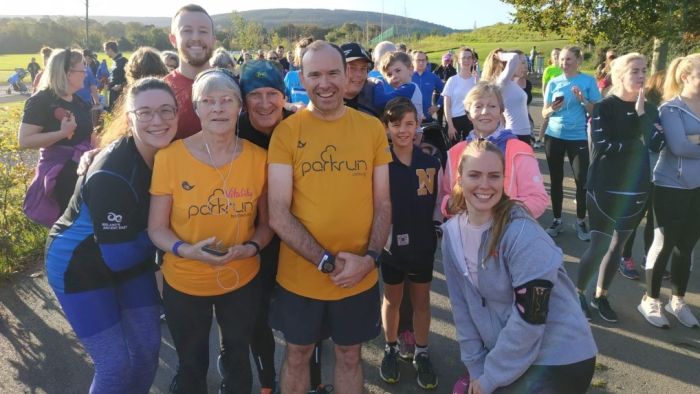One Saturday morning in May, 44-year-old Pete Johns went for a 5-kilometre run with his children.
When he got home, he collapsed.
Four days later, he woke up in intensive care after suffering a cardiac arrest.
Pete’s now fine and he’s back running again — thanks a lot to his local parkrun community.
Parkrun is a free, weekly, 5-kilometre run that happens in parks and open spaces across the world.
But forget what the name implies, because most people will tell you it’s not about running at all.
After his heart episode, Pete’s parkrun friends created a running roster to help him get moving again.
“The cardiologist was really clear with me that when I got back into running, I wasn’t allowed to go running by myself,” he says.
“Three of my really good friends who I’ve met through parkrun were there for me and took it in turns to take me out for a run and a walk to get my fitness back.
“And they’re still running with me at my very slow pace.”
‘It’s not about the run’
Parkrun originated in the UK in 2004, with one man’s simple idea of inviting his friends to his local park (Bushy Park in outer south-west London) for a timed 5-kilometre run.
And clearly, it caught on. There are now over 2,200 events worldwide.
Tim Oberg brought parkrun to Australia in 2011 and held the first event on the Gold Coast. There are now established events in 400 spots across the country.
About 60,000 people across Australia take part in the Saturday morning events each week. That includes runners, walkers and volunteers.
It’s a female-dominated activity too, where the gap is increasing each year.




So why do they keep coming back?
“It’s not about the run,” Oberg says.
Each year, the finishing times are actually getting slower — but that’s something parkrun is happy about.
“It’s not about bigger and it’s not about faster,” Oberg says.
“It’s about who’s coming and who’s benefiting. And really, if you think about who benefits the most from parkrun it’s not the fast people, because they’re already fit.
“It’s the people who are slow because they probably haven’t done anything like that before. And then they use parkrun to build their self-confidence and their self-esteem.”




(Not)parkrun, a lockdown saviour
Janet Reid, 61, has been walking, running and volunteering at parkrun for seven years now, two of those in South Africa and the latest five in Lochiel, South Australia.
She’s the event director there now and says she loves the laughs, seeing her friends and watching her community grow.




When parkrun stopped because of coronavirus, Janet was devastated.
“When it stopped, a lot of people really suffered, particularly with their mental health, because I think for all of us, going to parkrun, it is that sense of community, of belonging that was taken away from us.”
Glen Turner looks after health and wellbeing at parkrun in Australia, and says they did six months of research on how people’s physical and mental health was affected through the pandemic.




He says a lot of people said they felt isolated, lonely and detached from society.
“So I think it made us realise once and for all that it’s the social connectivity that people crave the most,” he says.




To compensate, parkrun started “(not)parkrun”, where people ran their 5 kilometres anywhere and logged it.
They also developed online home-schooling resources and worked with health professionals to put together blogs and self-help guides around things like sleep, nutrition and meditation.
There was also a weekly online parkrun quiz.
Lisa and Andrew Spencer and their sons Thomas, 12, and Blake, 9, from The Ponds got involved, and did their weekly (not)parkruns together too.
Loading…
Coming back
Parkrun events have re-opened across most of Australia already, with parts of New South Wales coming back today. The intention is to have all the state’s events back up by January 9.
Victorian events will re-open on January 16, where Ashne Lamb will be ready and waiting to see her good friends, including Pete, who she helped with his recovery.
“It’s those friendships that I really get out of parkrun,” the 31-year-old says.




To Ashne, Pete, Janet and the Spencer’s, parkrun is much more than a running event.
And it’s being recognised by doctors too.
“In other countries, such as the UK and Ireland, GPs prescribe parkrun to their patients,” Turner says.
“It’s because they understand the specific benefit people get from connecting to their community and having that sense of belonging and self-worth.







